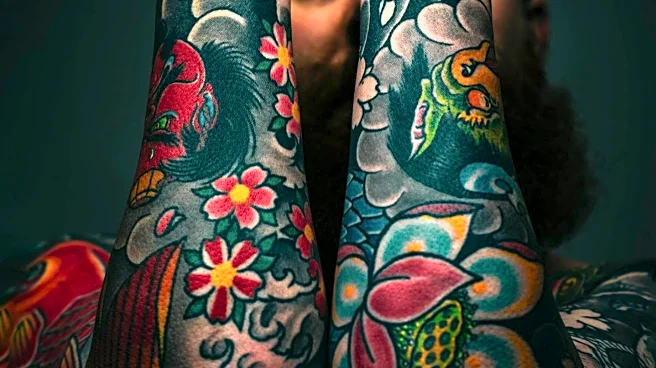What is the story about?
What's Happening?
Tattoo studios like Sedation Ink in Miami are offering clients the option to undergo tattoo procedures while sedated, eliminating the pain traditionally associated with getting inked. This service is gaining popularity among wealthy individuals and celebrities, such as Dallas Cowboys quarterback Dak Prescott and singer Post Malone, who have opted for large tattoos completed in a single session under anesthesia. The process involves licensed anesthesiologists and requires medical clearance, akin to cosmetic surgery. While some view this as a convenient evolution in tattooing, others argue it undermines the cultural and personal significance of enduring pain during the tattoo process.
Why It's Important?
The rise of sedation-assisted tattooing reflects broader trends in the normalization and commercialization of tattoo culture, which has shifted from a subcultural practice to a mainstream fashion statement. This development could impact traditional tattoo parlors, as the demand for pain-free procedures grows among affluent clients. It raises questions about the authenticity and cultural value of tattoos, potentially altering the perception of tattoos as a rite of passage or personal achievement. The practice also introduces medical risks, albeit low, associated with anesthesia, which could influence public opinion and regulatory scrutiny.
What's Next?
As sedation-assisted tattooing becomes more popular, traditional tattoo artists may face pressure to adapt to changing consumer preferences. This could lead to increased collaboration between tattoo studios and medical professionals, potentially transforming the industry. Additionally, debates over the cultural significance of tattoos without pain may intensify, influencing how tattoos are perceived and valued in society. Regulatory bodies might also consider establishing guidelines to ensure the safety and ethical practice of sedation in tattooing.
Beyond the Headlines
The trend of sedation-assisted tattooing highlights ethical considerations regarding the commodification of body art and the potential loss of cultural heritage associated with traditional tattoo practices. It raises questions about the role of pain in personal expression and the implications of removing it from the tattooing experience. This shift could lead to a reevaluation of what tattoos represent in contemporary culture, as well as discussions about the accessibility and inclusivity of tattooing as an art form.
AI Generated Content
Do you find this article useful?


















